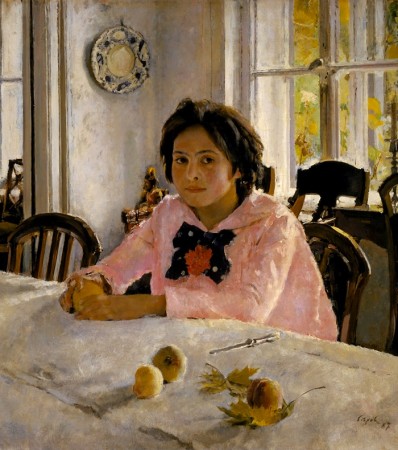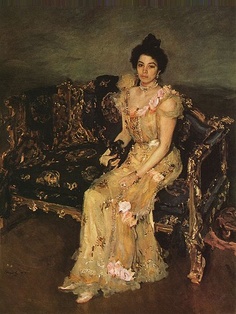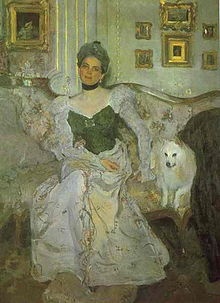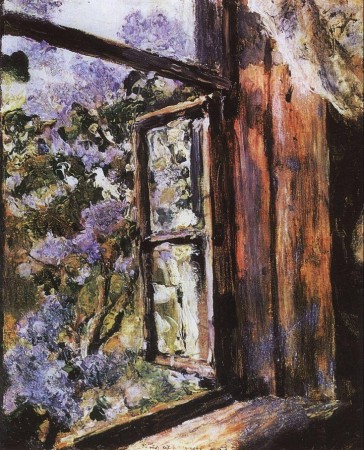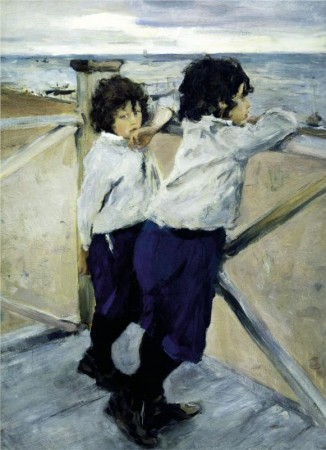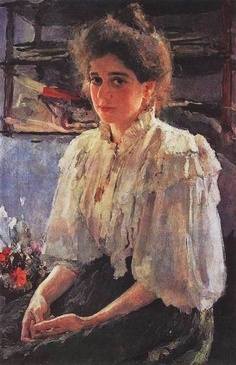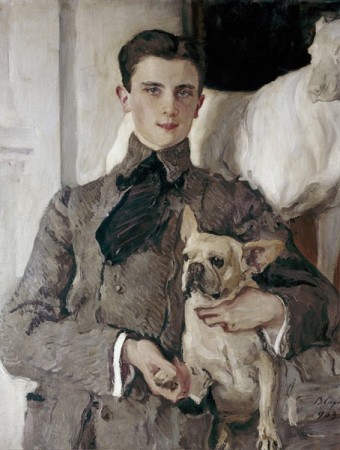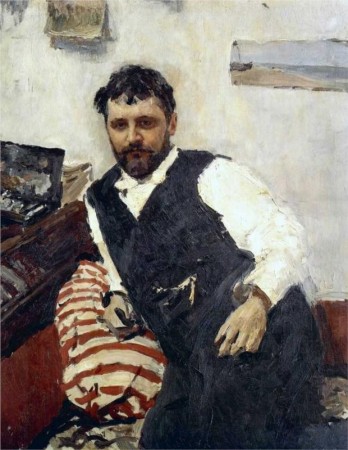Contemporary Korovin, Vrubel, Levitan, A., and M. Vasnetsov – Valentin Serov was one of the most influential figures in the artistic environment of the time. Member of the Academy of Arts, teacher School of Painting, Sculpture and Architecture (among his students – K. Yuon, Kuznetsov, K. Petrov-Vodkin), Trustee of the Tretyakov Gallery, participated in many exhibitions, he was always in the center of artistic life , its currents. Art historian and artist Alexander Benois wrote that Serov “reflected in his work all the Russian reality and its history.” Taking part in the opposite on the ideological and aesthetic views of the associations (Association of Traveling Exhibitions and “World of Art”), Serov always remained remarkably intact and consistent artist, his art remained free of any kind was set goals and a priori conclusions. The rise of the eternal values of art, psychology and spirituality of the finest made an important and element of his work, his imagery, and brought the artist international fame.
In childhood and youth, Valentin Serov studied at IE Repin (in Paris and Moscow), and then at the Academy of Arts Chistyakov. In the mid-1880s Serov travels to Europe. Great interest in it cause the master of the 16th century Renaissance. He wrote to his bride from Venice, intoxicated “revelations” of the city – “I want to, I want to welcome and will write only a welcome.” Serov’s intention to write “only welcome” meant nothing more than a combination of “The time is out” and the desire to be guided only by considerations of artistic order – quality, perfection and beauty.
In the late 1880s, Serov becomes a party Abramtsevo circle. Abramtsevo poetic atmosphere and the desire of his regulars, wrote Victor Vasnetsov, the beauty of “our Russian nature and man, our real life, our past, our dreams, dreams, our faith,” had a great influence on the young artist. Here, as well as in the Central n Domotkanovo, Serov created his few landscapes have long been numbered among his best works. During this period, the artist also refers to the psychological portrait.
Soon the picture twenty-three Serov “Girl with Peaches” (1887) received the award of the Moscow Society of Art Lovers, his other work become patrons and art lovers (SI Mamontov, PI Tretyakov).
Cousin of the artist, N. Simonovic recalled: “He was looking for new ways to transfer to the canvas infinitely varied play of light and shade with fresh paint …” Even in the early works that have become classics of Russian culture, the artist as it enters into a dialogue with them. Creating the perfect examples of painting, a thin line of realism and impressionism, game patches of color and plastic lines, he makes a step toward post-impressionism with his love for a prolonged state of man and nature. Serov wrote – “I am terribly interested in something hidden deep in the man.” He worked with a model of 30-40 sessions, and when it seemed that the portrait is completed, begin to look for the main thing that has eluded him, he “had to make a mistake” to distract from the image, but also revealing the unique individual characteristic. He could write dozens of times the same person, looking in his face all the new, subtle features.
Since the early 1890’s model constants are the artist actors, writers, artists. Serov constantly exhibiting his paintings on the road shows. This period is the creation of such works as “Portrait of Grand Duchess Xenia Alexandrovna” (1893), “Lola Derviz” (1892), “Artist’s Model for the Panther’s Skin” (1893), “Portrait of PP Konchalovsky. ” (1891). Evidence of constant creative search Serov are his numerous drawings, etchings, lithographs, watercolors.
In the late 1890s, a new art association, extremely close to the aspirations of “pure art” works of Serov – “The World of Art” (1898-1904). And Serov was at its origin, was one of the initiators of its creation.
Like many artists of the turn of the centuries, attracted by the idea of Serov synthesis of arts. Opposition to the Academy and the Wanderers, figures “World of Art” seen out for renewal of art in the synthesis and interaction of different kinds of arts – poetry and painting, painting and music.
This idea was embodied Serov especially when working with the theater. Drapery artist for the ballet “Scheherazade” by Rimsky-Korsakov had great success in “Russian Seasons” Diaghilev in Europe. They reflect the diversity of the origins of modern style, incorporating the features of the traditional folk art, the exotic East and the first manifestation of Russian avant-garde. Serov also tried to create a monumental and decorative panels mythological “Rape of Europa” (1910). Thumbnail curtain for the ballet “Scheherazade” will be presented at the exhibition in the gallery “House Nashokin.”
As a true artist, Serov understands art as the only force capable of transforming the world. Reflecting its variety of aspects of life – lyrical, mythological, historical, artistic, psychological, he always wanted to just capture the idea of being in general, its enduring values. His work – a universal, multi-faceted image of universal human truth and beau

